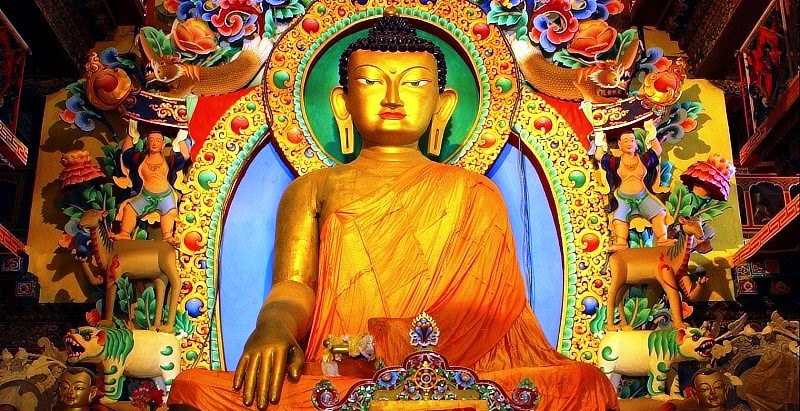“Just as a candle cannot burn without fire, men cannot live without a spiritual life.” – Buddha
Religion and spirituality bring people together. Though no two individuals are alike, their religious and spiritual beliefs can be. Lord Buddha gave to the world what only a few have been able to; he gave a path to eternal peace and satisfaction, the state called nirvana. The religion which began with a man under a pipal tree in Bodhgaya has spread to all corners of the world. Today, more than 350 million people follow the path that Gautama Buddha suggested, and live their lives as per his teachings.
Though the northern and north-eastern parts of India that lie close to Tibet are usually associated with Buddhism, the southern part of the country also shows a great influence of the religion. Buddhist monks, who felt it was their duty to spread the preaching of their leader in all corners of the world, also came here. Emperor Ashoka of the Mauryan dynasty also played a major role in spreading the religion in different parts of the country. The ruler, who reigned over almost the entire Indian subcontinent, convened the third Buddhist Council in Pataliputra in around 250 BC. He also sent emissaries to different parts of the world to spread the message of Lord Buddha, and many of them were also sent to the southern part of India.
When the Buddhist monks arrived here, they struggled as Hinduism and Jainism had many rigid followers. They went to different villages and cities of the region, built monasteries and other Buddhist centres where they would preach Jataka tales. They also established free medical centres and schools, which became a big attraction for people. Since Buddhism also ignored the caste system, it drew a large number of people from the oppressed classes. Ilambodhiyār, Aravaṇa Aḍigal and Bhikkhunī Maṇimekhalai are some people who dedicated their life to expanding the religion in the region.
However, just as quickly as the religion gained popularity in the earlier centuries of the 1st millennium, it lost followers around 7th century CE, when Jainism and Ajivikism prevailed in the region. Some historical texts also mention that as the religion lost its grounds in South India, many of its followers fled to Sri Lanka.
Though there were innumerable obstacles for Buddhism in South India, none of them has been able to completely eradicate it from the region. There are still many people here, who follow the teachings of Lord Buddha and live to spread his word. There are also numerous monuments that either speak about the religion or its history in the region. Here is a list of a few such monuments that bespeak of the deep roots of the religion in South India.
Namdroling Monastery, Karnataka
About 88 km from the city of Mysore lies Namdroling Monastery, where about 5000 monks and nuns preach the words of Lord Buddha. The gompa is the largest centre of the Nyingmapa sect of Buddhism in the world. Many major tulkus, the custodians of a certain lineage of Tibetan Buddhism, including the fifth Karma Kuchen Rinpoche and the third Chögtrul Rinpoche, have or are studying at this revered centre. The monastery was established in 1963 by His Holiness Penor Rinpoche, after he came from Tibet with a handful of monks. Here, Buddhist monks teach the lessons of the Buddha to the next generation so the word of the Guru lives on. The monastery offers accommodation to those, who want to spend more time here. So, in case the humdrum of the city life is getting too heavy for you to bear, spend a few days in the blissful aura of this gompa and find a new meaning of life.
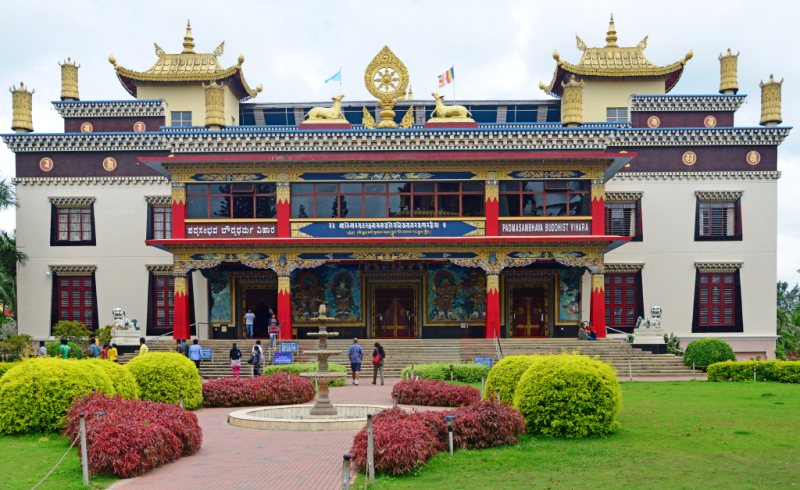
Karumadi Kuttan, Kerala
Perhaps the only place in Kerala to find Buddha, Karumadi Kuttan is an old shrine. Rather than a large monastery, this one is a small temple. What draws scores of people here is the fact that a black granite statue of Lord Buddha is situated here. The statue, which dates back to the 11th century, has numerous fascinating legends associated with it. It is believed to have been built by monks, who came to Kerala to spread the message of love and non-violence. The left hand of the structure is broken, and is supposed to have been separated by an elephant. There is another local belief that the statue has healing powers and people from near and far come here looking for the cure of their ailments. The intriguing shrine is a great place to visit whenever you are in the state.
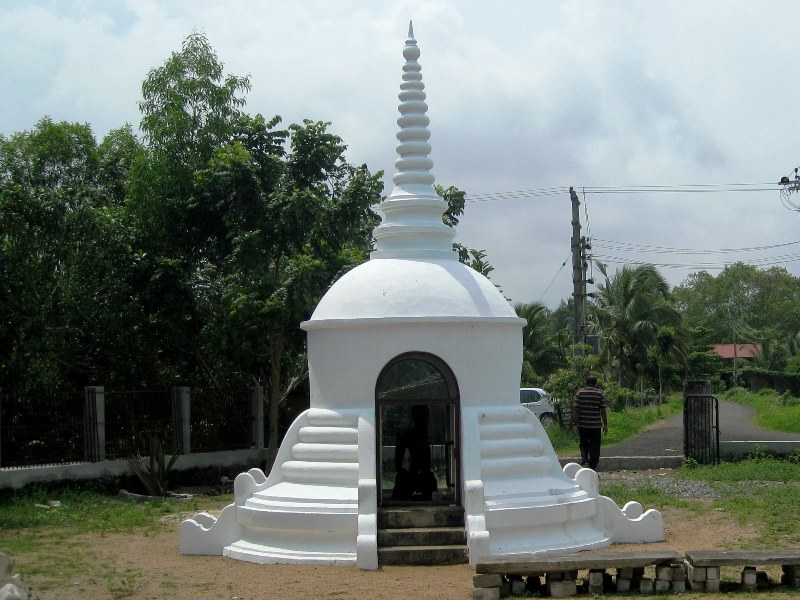
Chudamani Vihara in Nagapattinam, Tamil Nadu
Nagapattinam, a coastal town in Tamil Nadu, was a significant place in the old times. The settlement was an important part of the Chola dynasty, one of the longest reigning empires in South India. The history of Chudamani Vihara dates back to the 3rd century BC, as historical Burmese texts mention, a Buddhist monastery was built in the town by Emperor Ashoka. However, the current structure, which stands in the town, is believed to have been built in the year 1006 AD by King Sri Vijaya Soolamanivarman with the help of the Rajaraja Chola 1 of the Chola dynasty. Nearly 350 bronze statues of Lord Buddha that were built between the 11th and 16th centuries have been found here since 1856. The quaintness of the town and the divinity of the shrine make perfect ingredients for the peace of mind.
Amravati Stupa, Andhra Pradesh
Many people miss to notice that Andhra Pradesh has one of the largest and the oldest stupas in the country, namely Amravati Stupa. Built during the 2nd century BC, the shrine remained a significant Buddhist place of worship for centuries. The structure, which was left in ruins, was found by the British Colonel Colin Mackenzie in 1797. Since then, numerous excavations have been done here to bring back the true architectural splendour of the shrine. The excavations have also surfaced the ruins of an Ashokan pillar. If you are planning a trip here, also visit the 125-feet tall statue of Dhyana Buddha built in Amravati.
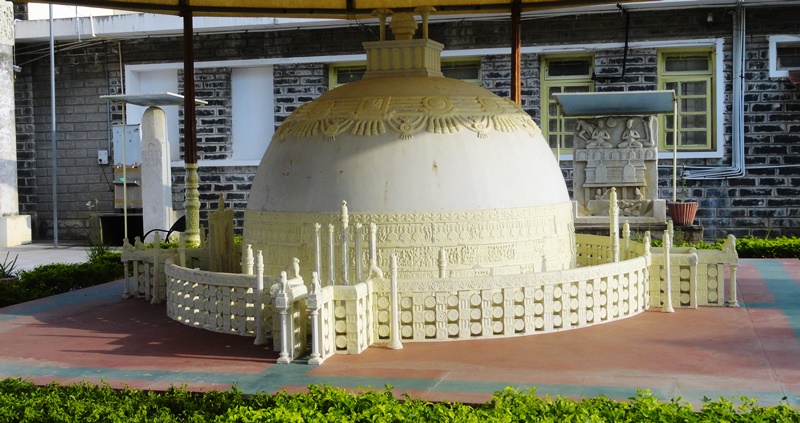
Kanchipuram Monastery, Tamil Nadu
Kanchipuram Monastery, which was among the most significant Buddhist centres in Tamil Nadu, has withstood the test of time to show its architectural magnificence to the people of the 21st century. The shrine was built in the 2nd century BC and is home to hundreds of monks for hundreds of years. Kanchipuram is also believed to be the birthplace of Bodhidharma, who played a major role in the expansion of Buddhism in Asia. The grandeur of the shrine symbolises the extent to which the devotees went in reverence of their deities.
Bavikonda, Andhra Pradesh
About 35 km from the city of Visakhapatnam, Bavikonda is a hidden Buddhist treasure. Excavations carried out in the past few decades have revealed a whole complex. Numerous pieces of pottery, tiles, bricks and coins have also been found in the area. These findings not only speak of the history of the region, but also about the culture and how Buddhist people lived in the bygone era. Among these, was also an urn, which contained a piece of bone along with ash. Many people consider this to be the remains of Lord Buddha. The site is definitely a memorabilia of the times when the religion flourished in the region.
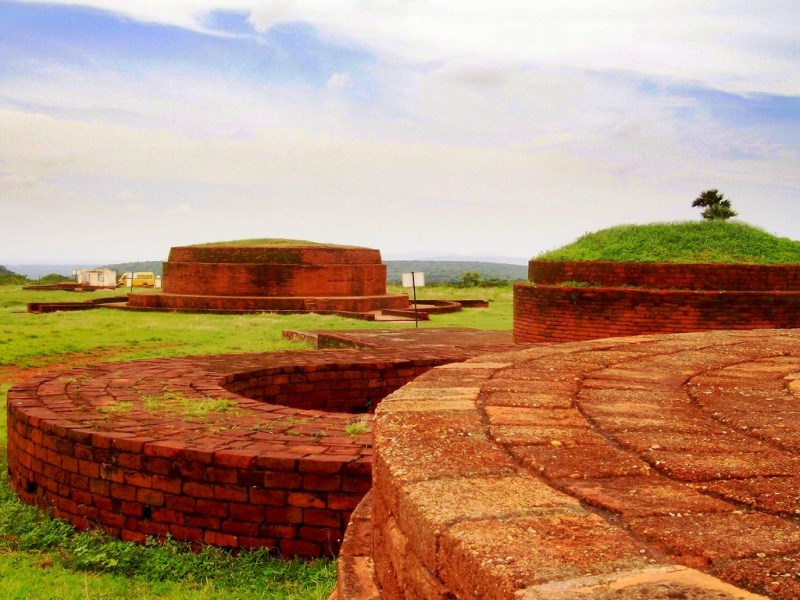
Bojjannakonda, Andhra Pradesh
At a short distance from the Sankaram village in Andhra Pradesh lies a hill called Bojjannakonda. But, it is no regular a hill as this one is home to numerous monolith stupas, chaityas and monasteries. Researchers have attributed that the site was built somewhere between the 4th and 9th centuries. On the western side of the hill, you can find 65 stairs that lead up to the two-storey rock-cut cave. With time, the five of the 16 pillars of the cave have perished, but the remaining still hold to let people admire this fascinating shrine. On the upper level of the cave, you can find a Buddha statue. Not too far from Bojjannakonda, Lingalakonda is another hill, which also has similar kind of stupas and rock-cut caves. Innumerable artefacts have been excavated from these two hills, which include coins, seals and pottery items.
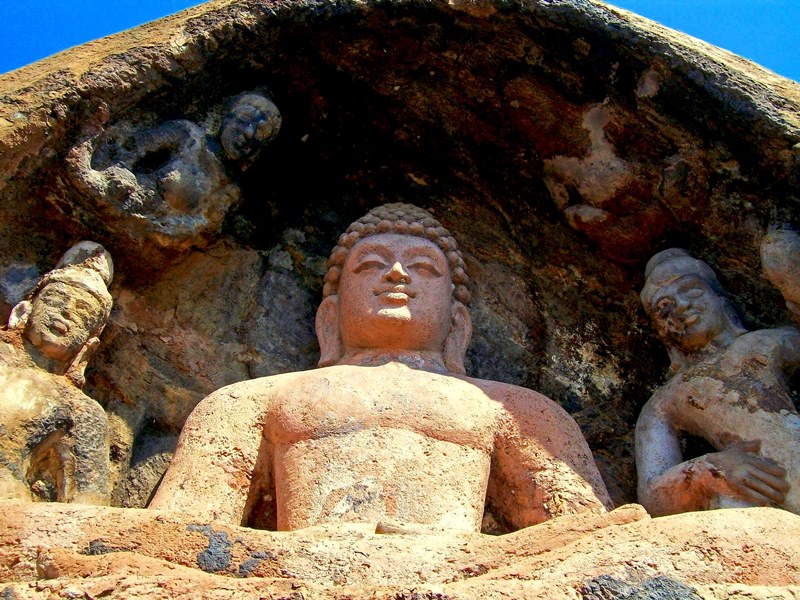
Pavurallakonda, Andhra Pradesh
The surrounding area of Visakhapatnam was home to many Buddhist scholars when the religion was gaining followers here. Among the numerous Buddhist shrines here is also Pavurallakonda, which is a monastic complex. It is believed to have been home to many monks from the 3rd century BC to the 2nd century CE. As the excavations began here, people found treasures of coins, stupas, beads, chaityas, etc. Owing to the religious and historical significance of the site, requests have been made to UNESCO to include this site along with Thotlakonda and Bojjannakonda to the heritage sites’ list.
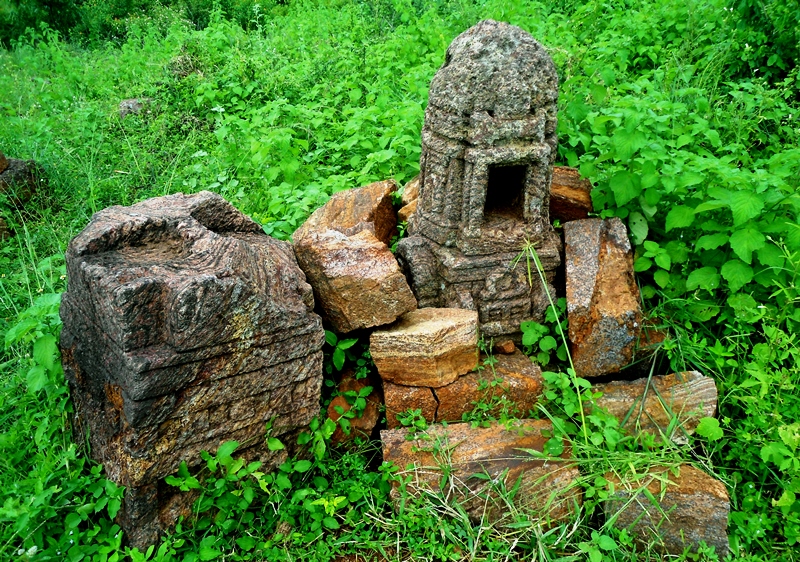
So clearly, besides the famous Buddhist sites in North India, there are many lesser-known in South India as well, where one can go to seek peace. You can visit any of these sites and pay homage to Lord Buddha.

